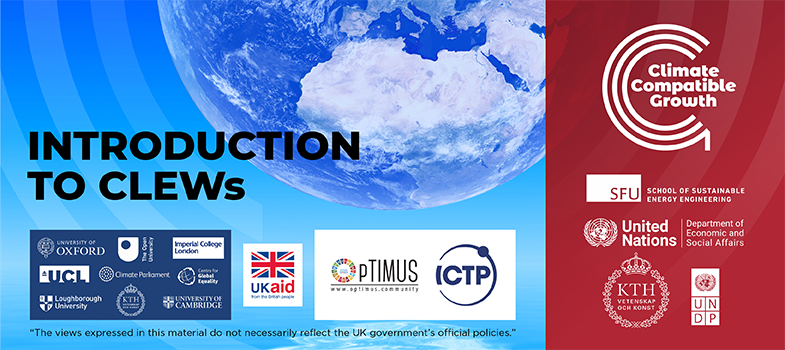Introduction to CLEWs
Please note: there is a newer version of this course, available on the Climate Compatible Growth Home Collection.
Climate, land-use, energy and water systems (CLEWs) models are tools for simultaneous consideration of food, energy and water security. They are designed to assess how production and use of these resources may contribute to climate change, and how climate change may affect resource systems. By comparing different technologies and value chains, such models can identify pressure points, and indicate synergies and trade-offs to reach development goals. CLEWs can analyse policy decisions on issues such as the promotion of clean energy, competition for water and agricultural modernization.This course introduces the CLEWs approach and is designed to provide learners with a conceptual understanding of the tool. Subject matter is delivered in 11 lectures. These introduce first the key development challenges and policy issues associated with climate, food, energy, and water security. Then they describe how the CLEWs modelling tool can be used to represent these systems and assess related sustainable development strategies. The lectures are accompanied by a set of hands-on exercises that take the learner through the steps of building a CLEWs model from scratch: defining model components, linking them together in an integrated system representation, populating the model with data, running a model, and interpreting results.
This is the November 2021 presentation of the course.


